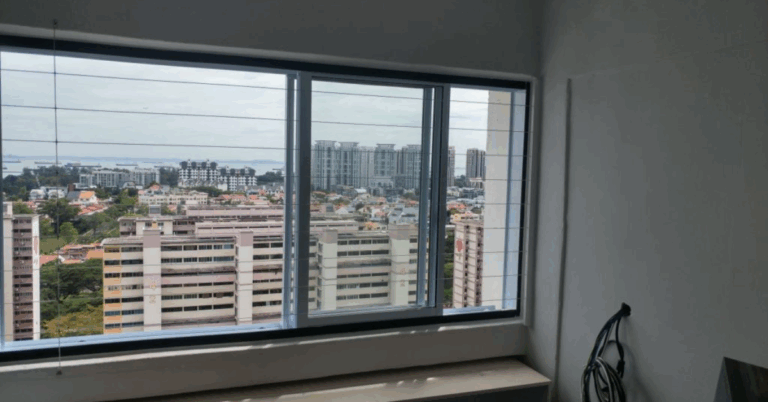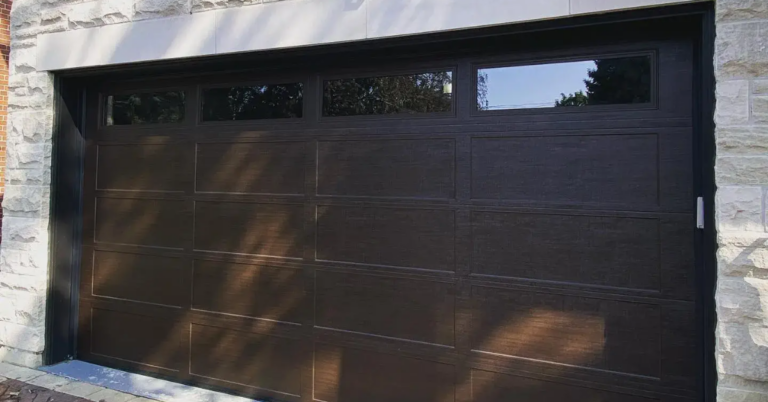Container Top Cover: The Unsung Hero of Cargo Protection
When we think of shipping containers, we often picture their sturdy steel sides and lockable doors — but one component quietly plays a pivotal role in safeguarding the cargo from above: the Container Top Cover. A container top cover is a protective sheet or assembly placed over the open top of a container to shield the goods within from exposure to weather, debris, and security risks. It’s especially essential when working with open-top containers, where there is no rigid roof. In this article, we’ll explore how container top covers are used, what benefits they bring, design considerations, materials involved, common applications, and tips for selecting and maintaining an effective cover.
Why Container Top Covers Matter
In shipping, logistics, and transport across land and sea, cargo is vulnerable — particularly from rain, wind, dust, ultraviolet rays, and even theft or tampering from above. A container top cover serves as a barrier that prevents moisture ingress, reduces the chance of contamination, and protects sensitive goods such as electronics, grains, chemicals, and perishables. Without proper top protection, even if the container walls are sealed, the open top becomes the weakest link in protection.
Furthermore, an effective top cover can reduce insurance risks and claims, maintain the integrity of the cargo, and uphold compliance with safety and shipping regulations. In many industries (e.g. construction, mining, agriculture), oversized or irregular loads may exceed the standard container height, making open-top or canopy containers common. For such loads, a well-designed container top cover becomes indispensable.
Key Benefits of Using Container Top Covers
-
Weather Resistance & Environmental Protection
A quality top cover shields cargo from rain, hail, snow, UV exposure, windblown dust, and salt spray (for marine environments). This is crucial for products that are moisture-sensitive or prone to corrosion. -
Security & Tamper Resistance
Top covers act as deterrents to unauthorized access or tampering. With features like heavy-duty eyelets, secure fasteners, and reinforced edges, they make it harder for intruders to breach the container from above. -
Flexibility in Loading and Unloading
Many covers are designed with removable panels, flaps, or zippered sections. This flexibility allows handlers to load or unload parts of the cargo without removing the entire cover — saving time and effort. -
Customization & Adaptability
Covers can be tailored to different container sizes (e.g. 20 ft, 40 ft, or specialty dimensions) and adjusted to suit different cargo profiles. They can also be reinforced or modified for extra protection where needed. -
Cost Efficiency Over Time
Investing in a durable container top cover can reduce losses from weather damage or theft, thereby lowering long-term costs. The initial cost is often offset by fewer claims and less spoilage or damage. -
Regulatory Compliance & Insurance Support
Certain shipping or cargo regulations require containers to be properly sealed and weatherproof. Using a certified or well-constructed top cover helps ensure compliance and may aid in insurance underwriting.
Design Considerations & Technical Features
When designing or selecting a container top cover, there are several important features and specifications to consider:
Material Selection
-
Heavy-duty PVC / Coated Fabrics: These are common due to their water resistance, durability, tear strength, and UV resistance.
-
Reinforced Edges & Seams: To prevent tearing along load-bearing zones.
-
Double-stitched or Heat-welded Joints: For more robust seam integrity.
-
Additives & Treatments: UV stabilizers, flame retardants, anti-mildew additives, or anti-static agents can be included depending on use case.
Fastening & Attachment Systems
-
Grommets / Eyelets: Heavy-duty metal rings spaced along the edges, through which ropes, cables, or hooks can secure the cover.
-
C- or T-hooks / Lugs: Fittings that latch into container corner castings or side frames.
-
Ratchet Straps / Buckles: For tensioning and ensuring a tight fit.
-
Slide-in Rails or Channels: Some covers use rails on container sides to slide panels in place.
Modular / Removable Sections
Covers may be designed with flaps, zippered panels, or detachable modules to allow access to certain parts of the load for partial unloading without removing the entire cover.
Drainage & Venting
To prevent water pooling, some covers include drainage channels, sloped surfaces, or venting to allow condensation to escape and reduce moisture buildup under the cover.
Size & Fit
Covers must exactly match the container’s opening dimensions (length, width) plus allowances for overhang or drape where required. Custom-fit ensures better sealing and reduces wind uplift.
Handling & Storage Features
Reinforced corners, carry handles, and folding allowances make the cover easier to handle and store when not in use.
Applications Across Industries
Container top covers see use across a wide range of sectors:
-
Shipping & Freight: In international sea or rail transport, where containers move through storms, salt spray, or high winds.
-
Construction & Mining: Transporting heavy machinery, aggregates, or oversized loads that exceed standard container heights.
-
Agriculture & Bulk Commodities: Covering grains, fertilizers, or other bulk goods that must be shielded from moisture and pests.
-
Waste & Recycling: Containers used for scrap, metal, or waste may use covers to contain debris or odors.
-
Oil, Gas & Chemicals: When transporting drums or equipment that must remain free of moisture and contamination.
Challenges & Mitigations
While container top covers are highly beneficial, some challenges must be addressed:
-
Wind Uplift / Flapping: Poorly tensioned covers may flap under wind loads, causing wear or failure. Mitigation: Use proper tensioning systems, edge reinforcements, and intermediate straps.
-
Abrasion & Wear: Constant friction can damage the material, particularly at contact points. Mitigation: Reinforce high-stress zones and use abrasion-resistant fabrics.
-
Puncture or Tear: Sharp cargo edges may pierce the cover. Mitigation: Use padding or edge guards beneath the cover.
-
Improper Fit or Misalignment: A cover that is too loose or too small won’t seal properly. Mitigation: Use custom-fitted designs and precise measurements.
-
Condensation & Moisture Accumulation: Trapped moisture can harm the cargo. Mitigation: Venting systems or breathable fabric layers help reduce condensation.
Best Practices in Selecting & Using a Container Top Cover
-
Accurate Measurement
Measure the internal opening (length, width), and consider any drape required. Also account for accessory fixtures like corner castings or rails. -
Material & Treatment Matching
Choose materials suited to environmental conditions (marine, UV exposure, chemicals) and include relevant treatments. -
Design for Access
If partial unloading is needed, opt for modular panels or zippered sections rather than a single fixed sheet. -
Proper Tensioning & Fastening
Use ratchet straps, proper hooks, and tensioning devices to ensure a snug, vibration-resistant fit. -
Inspection & Maintenance
Regularly inspect grommets, seams, and fabric surfaces for wear or damage. Repair small tears proactively. -
Safe Handling
Use gloves and supporting frames when covering or uncovering cargo to avoid injury and material damage. -
Storage & Protection
When not in use, store covers in dry, shaded areas, rolled rather than folded, to avoid permanent creases or damage.
Real-world Scenario: How It Plays Out
Imagine a supplier needs to transport heavy machinery parts in an open-top 20 ft container across sea freight. Without a cover, the cargo is exposed to salt spray, rain, and wind during rough seas, risking corrosion and damage. By outfitting the container with a heavy-duty PVC top cover with secure eyelets and tensioning straps, the supplier can minimize ingress of moisture and particulate matter. The cover’s removable flaps also allow partial unloading at intermediate destinations without removing the entire top, saving time.
Another scenario: a farmer shipping bulk grain in an open container by rail experiences condensation buildup within the load due to temperature differentials. A container cover designed with venting channels alleviates moisture accumulation, thus preserving the grain’s quality.
Future Trends & Innovations
The world of container top covers is evolving. Some emerging trends include:
-
Smart or Sensor-Integrated Covers: Incorporating humidity or leak sensors that can alert managers of ingress or moisture.
-
Advanced Composite Fabrics: Lighter yet stronger fabrics with better tear resistance and UV stability.
-
Modular Sliding Roof Systems: More rigid “rolling roof” systems that allow opening and closing under load rather than full removal.
-
Green / Eco-Friendly Materials: Fabrics made from recycled or sustainably produced materials, without compromising durability.
-
Automated Deployment Systems: Mechanisms (hydraulic or mechanized) that deploy or retract covers with minimal manual labor.
Conclusion
A container top cover might not be the most glamorous component in logistics and shipping, but its role is indispensable. Serving as the barrier between the elements and your cargo, it protects, secures, and adds versatility to how goods move across the globe. Whether it’s shielding high-value electronics or bulk goods, the right cover design — strong materials, proper fit, secure fastening, and thoughtful modularity — can make the difference between a damaged shipment and a successful delivery.
If you’re in the market for a top cover for your containers, always prioritize quality construction, customization, and maintainability. In doing so, you’re making an investment in cargo safety, operational efficiency, and peace of mind.







